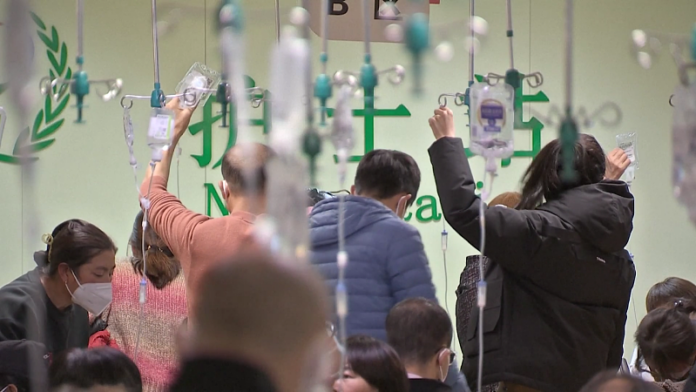The continued increase in acute respiratory illnesses reported recently in China is caused by various respiratory pathogens, according to a Chinese health official on Sunday.
Mi Feng, a spokesperson at the National Health Commission, told media at a press conference that the recent respiratory infectious diseases are mainly due to the influenza virus, with additional cases caused by rhinoviruses, mycoplasma pneumonia, respiratory syncytial virus, and adenovirus.
Hospitals in parts of China are seeing a surge in infections of mycoplasma pneumoniae, a pathogen that commonly causes respiratory illnesses among young children, Xinhua reported in October. The World Health Organization also said northern China had reported an increase in influenza-like illnesses compared with the same period in the previous three years. Many people posted images on Chinese social media platforms where parents and children packed the hospitals in Beijing.
People of different ages may suffer respiratory illnesses caused by other pathogens, said Wang Huaqing at the conference, who is the chief expert on the immunization program at the Center for Disease Control and Prevention (CDC).
Children aged 1-4 are inclined to be infected by the influenza virus and rhinoviruses, while those aged 5-14 are mainly infected by the influenza virus and mycoplasma pneumonia.
People aged 15-59 are primarily infected by the influenza virus and rhinoviruses, even the COVID-19 virus. Older adults over 60 are easily infected with human metapneumovirus.
Wang advised people to consult a doctor and get vaccinated to boost protection against viruses that can cause respiratory illness.
Strengthening monitoring of the elderly can significantly help them, said Li Yanming, head of the Department of Respiratory and Critical Care Medicine at the Beijing Hospital. “Some elderly with dementia or older age may be unable to express well their discomfort.”
It is more likely for the elderly to get severe symptoms after being infected with a respiratory virus, as many of them have chronic conditions, such as diabetes and coronary heart disease.
Li also noted that the elderly could show atypical symptoms due to the infection, such as falling, as the respiratory illness undermines their stability when walking. Other symptoms, including decreased food intake and drowsiness, can also suggest they might be infected with a virus.
















